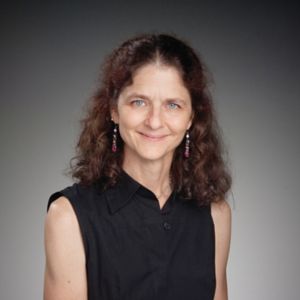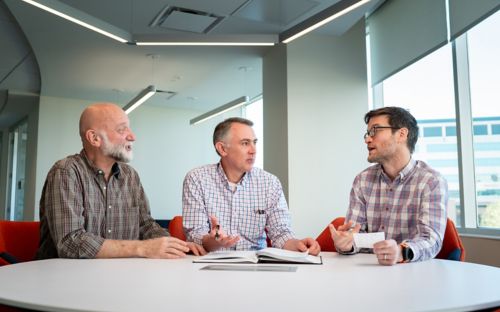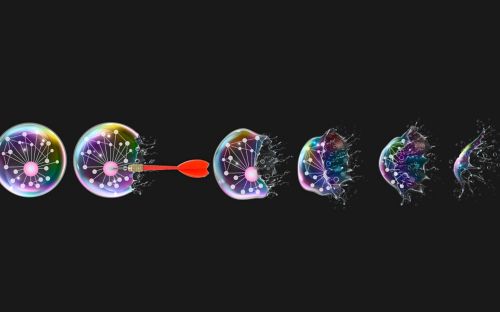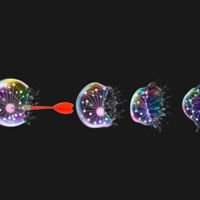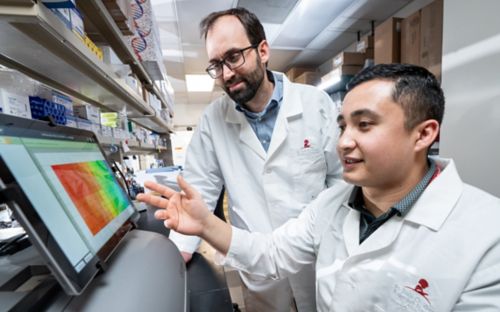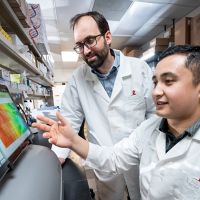Smithsonian honors St. Jude visionaries for ‘bubble boy’ cure
What do rapper Lil Nas X and St. Jude researchers Ewelina Mamcarz, MD, Stephen Gottschalk, MD, and the late Brian Sorrentino, MD, have in common?
What do rapper Lil Nas X and St. Jude researchers Ewelina Mamcarz, MD, Stephen Gottschalk, MD, and the late Brian Sorrentino, MD, have in common?
They are recipients of the 2019 American Ingenuity Awards from Smithsonian magazine, the premier publication of the Smithsonian Institution. The annual awards recognize visionaries spearheading revolutionary changes in a variety of fields.
Winners in seven categories ranging from youth and performing arts to life sciences and technology were announced Nov. 19.
Lil Nas X, best known for his single “Old Town Road,” received the youth award.
The St. Jude researchers received the life sciences award. The trio was honored for their leadership in developing gene therapy to cure for the devastating rare, genetic disorder widely known as “bubble boy” disease. The disorder, X-linked severe combined immunodeficiency (SCID-X1), leaves infants without functioning immune systems. Untreated, the children usually die early in life. Current therapies have significant limitations.
“It is a great to honor to receive the Smithsonian ingenuity award for the St. Jude XSCID gene therapy program,” said Gottschalk, chair of the hospital’s Department of Bone Marrow Transplantation and Cell Therapy. “It was a blue-sky idea more than a decade ago with no guarantee of success. But through a genuine team effort, perseverance and long-term vision, we were able to surmount all obstacles and develop a lifesaving therapy.”
SCID-X1 is caused by a mutation in a gene named IL2RG. In research led for decades by Sorrentino, St. Jude researchers re-engineered a virus to carry a correct copy of the gene into the blood stem cells of patients.
In April 2019, research published in the New England Journal of Medicine reported that children treated with the gene therapy were producing functional immune cells for the first time, including T cells, B cells and natural killer cells. The study focused on the first eight children who received the experimental therapy at St. Jude or UCSF Benioff Children’s Hospital San Francisco.
The children also received low doses of the chemotherapy agent busulfan based on a model developed by St. Jude collaborator Mort Cowan, MD, of the University of California, San Francisco. The treatment helped make room in patients’ bone marrow for the gene-treated cells.
Three years after the first child was treated, all are doing well, are responding to vaccines and show no signs of treatment-related leukemia or other significant side effects. Although monitoring continues, researchers said the results suggest most patients will develop complete and durable immune responses. In other words, the children are cured.
The study is continuing at St. Jude, UCSF Benioff Children’s Hospital and Seattle Children’s Research Institute. A dozen children are now enrolled. St. Jude has partnered with the biopharmaceutical company Mustang Bio to further development of this gene therapy.
“Since its founding, St. Jude has accomplished many milestones to advance cures for pediatric catastrophic diseases,” said James R. Downing, MD, St. Jude president and chief executive officer. “For years, the late Brian Sorrentino, MD, and his team dedicated their work to finding a cure for the immune disorder. Their achievement shows the power of persistence and what can be accomplished when determined individuals work together to achieve a better tomorrow for children in need.”
Here are the other winners and what the Smithsonian noted about their contribution:
- Visual Arts: Amy Sherald, a painter known for her portrait of former First Lady Michelle Obama. Her work seeks to fit African Americans into the canon of American portraiture.
- Social Progress: José Andrés, a restaurateur and founder of World Central Kitchen. The nonprofit has revolutionized emergency food aid delivery.
- Technology: Alex Kipman, a Brazilian-born inventor and visionary behind many of Microsoft’s most pioneering products. The list includes the mixed-reality headset HoloLens.
- Physical Sciences: Sheperd Doeleman and the Event Horizon Telescope Team. The Smithsonian Astrophysical Observatory and Harvard University led a team of more than 200 researchers that created the first image of a black hole.
- Performing Arts: Heidi Schreck, a writer and star of the play What the Constitution Means to Me. The piece opens an honest debate about the meaning, value and limitations of the nation’s founding document.
